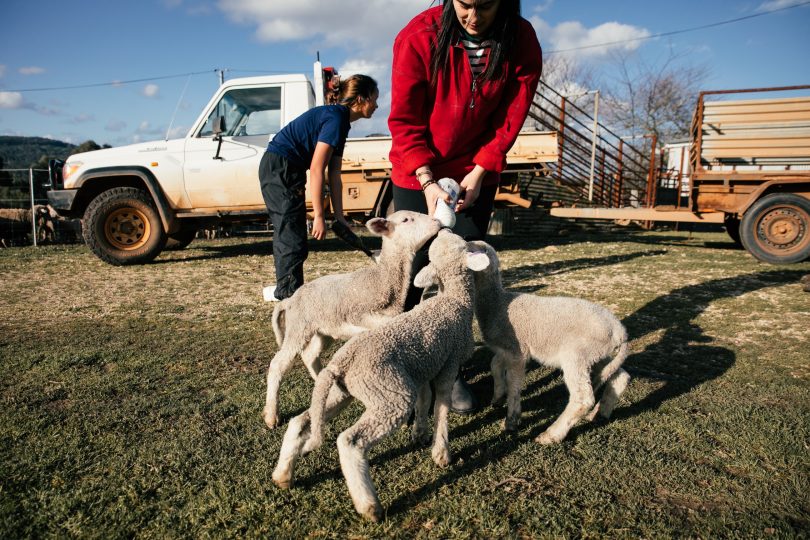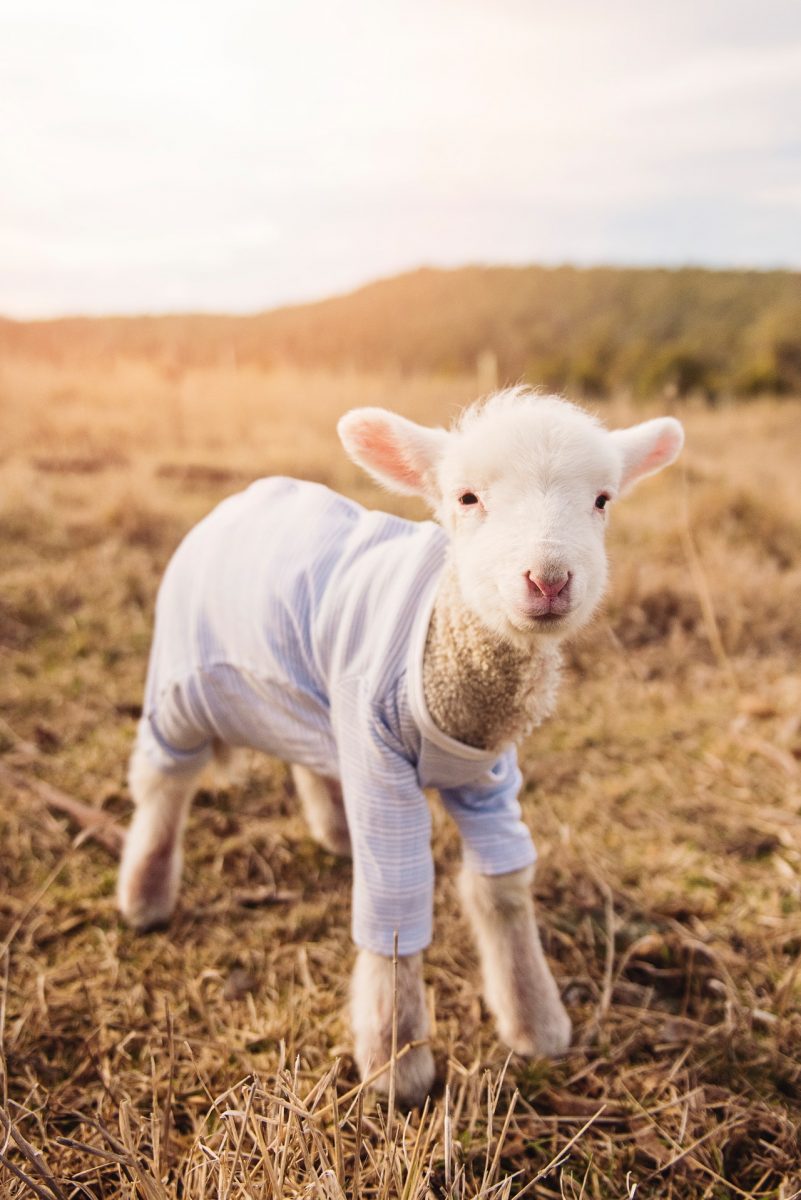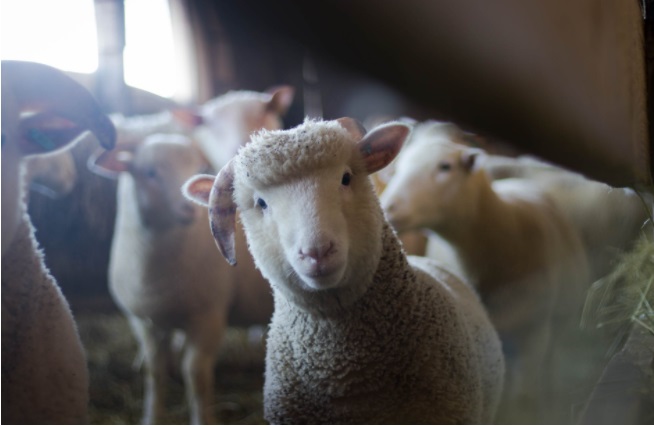
The history of sheep husbandry in Australia is peppered with stories of lamb losses and the rather difficult nature-versus-nurture debate which is lost on the ears of little people who see an orphan lamb and want it. Photo: Supplied.
Right now as the rain falls, winds gust, the chill factor drops and we all have the comfortable respite of home, lambs are being born and kids are on holiday. A lethal combination for any parents who delight in quiet and calm in their lives.
My mother has muscle memory of those times she looked into the sheepish eyes of those little bleaters as she waved we kids off to school. To this day, I’m not sure where those lambs went.
But it was she who I can credit, decades later, for the very efficient way I managed to keep my mob alive. There was also a wonderful vet out here at Young by the name of David Burnett who with wife Cathy managed to raise a gazillion native animals back in the day.
And I thank his successor, Mark Hawker, for ensuring David’s legacy lived on through notes jotted on a piece of paper – akin to the Holy Grail of Lamb Raising – which I’ve kept and promised Jo Hawker that I will frame for posterity.

Dog coats are a fashionable touch for poddy lambs, and serve the dual purpose of keeping them warm. Photo: Supplied.
With a little bit of research and spit and polish, I believe we have the magic recipe for raising lambs which 30-odd down the paddock will testify to. Maybe not a vet or old wives with tales, but it might help some hapless mother standing in a kitchen looking into the little black eyes of a hungry lamb.
1) Feel the inside of the lamb’s mouth. If it’s cold, I reckon that’s hypothermia (I’m not a vet) so get it warm fast. My warmth of choice is beside a fire in a basket with hundreds of old towels.
2) Get a syringe, a baby’s bottle or even a washing glove. Anything that will deliver droplets of warm milk onto a little pink tongue in the absence of a proper latex lamb’s teat from produce stores or the vet.
3) There’s no substitute for colostrum. It’s the first thing you should get into a lamb’s stomach if it’s aged 48 hours and under, and if milking sheep isn’t an option.
However, there is a tried and true colostrum substitute recipe:
- 680ml cows milk
- 1 beaten egg
- 5ml cod liver oil (sometimes I use olive oil)
- 10 grams sugar (or glucose).
Make sure the mix is blood warm. Test it like you would baby’s food. Try the teat – if it runs too fast, control the flow with your fingers. The idea here is to be measured. The danger here is too much milk, too fast, which may be inhaled and end up going down to the lungs instead of the stomach. Not good.
If the teat isn’t happening, the lamb is weak or is all tongue and lacking technique, feed droplets starting with 5ml and working up from that at regular intervals until you think it’s had just enough not to be overfull or bloaty. Feed little, but often.
4) David Burnett’s prescriptive regime for lamb feeding rates:
- 2-10 days: 100ml x 6 times daily
- 10-14 days: 200ml x 4 times daily
- 2-4 weeks: 300ml x 3 times daily
- 1-2 months: 400ml x 2 times daily
- 2-3 months – 400ml x 1 x daily.
5) If the lamb is indoors, newborn nappies work a treat. Or bed them down on straw in a warm spot. You need them in a convenient location for your own sanity. Cages are good until lambs start headbutting them. Dog coats are particularly useful clothing to keep them warm.

Feeding little, but often, is the key to a successful outcome for rearers of poddy lambs. Photo: Supplied.
6) Bloat, scours and dehydration are the three main dangers which should be discussed with a vet, who will also provide advice on what milk powders are best to use and when hard feeding can begin. But in the first instance, sanitation of bottles and teats is critical. A good old Milton tablet or two in a bucket is as good a measure as any.
7) Any soft drink bottle will do for feeding, as will a glass bottle. Watching a lamb drink from a beer-labelled bottle is commonplace for most farm households.
Taking on the role of looking after an orphan lamb is difficult and challenging, yet extremely rewarding. Ensuring the lamb is always warm, dry, well fed and that any illnesses are treated quickly is essential to a good outcome.
And they eventually stop bleating!
Original Article published by Edwina Mason on About Regional.








